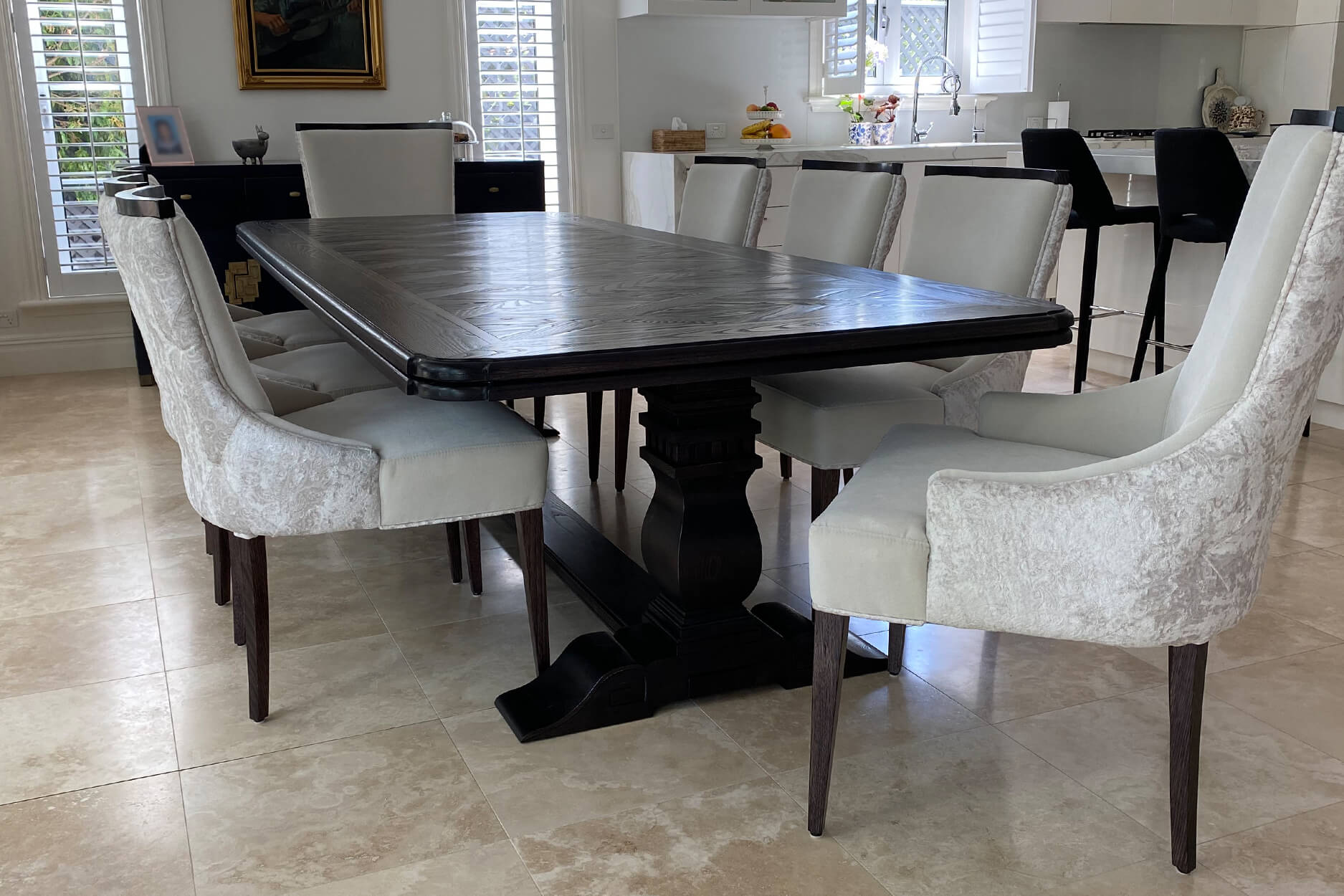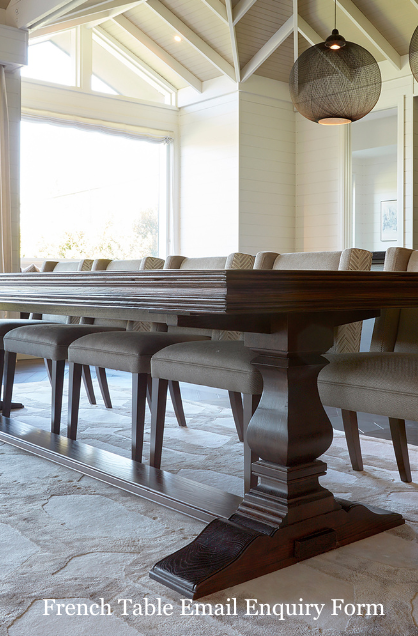Reimagining Classic Craftsmanship Through the Lens of The French Refectory Table
Some designs fade in and out of style. Others feel like they’ve always been with us. The French refectory table belongs in that second group. Strong, simple, and practical, it holds meaning that goes beyond looks. At first, it seems like nothing more than a large dining table. But over time, it became a symbol of gathering, patience, and tradition that doesn’t disappear. So, what does a piece like this still teach us, even in modern homes?
Origins in the Monastery
The story starts in medieval France. Imagine long stone halls with benches and heavy timber tables. Monks sat together, not to impress, but to share meals. Early refectory base tables were made from oak or walnut, with wide tops, sturdy legs, and joinery built to last through years of use. They carried no extra decoration. Everything was plain and purposeful.
These choices revealed values that still feel familiar today. Simplicity, strength, and community. Nobody worried about matching sets or trends. The table’s job was to hold food and bring people together. The fact that this design spread beyond monasteries says something: things built on durability and restraint often endure.
Craftsmanship in Detail
Run your hand across an old piece of French furniture, and you’ll feel what makes it different. The refectory base table wasn’t about show. Its character lives in small details: joints pegged tight, hand-planed boards that aren’t perfectly even, surfaces that slowly change with use.
With age, these French tables gained marks that softened into beauty. Scratches blended, edges wore smooth, colours deepened in ways no factory could copy. A solid oak dining table became richer with time, like skin gathering lines of age. That’s why a hand crafted dining table in this style still feels right today. It isn’t chasing trends. It’s built to grow with the years.
Adaptations for Contemporary Living
Not every modern home has space for a six-metre solid oak dining table. Designers know this and have experimented with size and material. Some solid oak dining tables are slimmer and lighter, made for small dining rooms. Others are wider, built for big families. Finishes range from pale timber, perfect for open coastal spaces, to darker stains that bring formality.
An Australian made dining table inspired by the French refectory table style often mixes local timbers with old principles. At times, steel or stone tops are paired with timber bases. These changes shift the look without losing the spirit. What matters isn’t copying every line, but keeping the balance between past and present. That’s what allows the form to continue.
The Enduring Appeal of Form
Why are people still drawn to the refectory base table? Perhaps because it gives a sense of permanence. In flexible, modern interiors, a large dining table does more than fill space. It anchors the room. It becomes the spot where people gather without being told.
You’ll see this piece in many settings: farmhouses in rural France, polished London townhouses, or sunlit coastal homes in Australia. Each place shapes it differently. Rustic in one, refined in another, but always familiar. That range is rare, and it shows that French furniture traditions don’t stay frozen. They adapt quietly while carrying history along.
Heritage in a Culture of Disposability
There’s also a cultural shift to note. Fast furniture fills stores, but it doesn’t hold up. Pieces break, trends fade, and replacements come quickly. A hand crafted dining table resists that pattern. It invites slower living and care for what’s been built to last.
Choosing a solid oak refectory table isn’t only about the wood. It’s about continuity. Instead of discarding, you repair. Instead of replacing, you pass it on. Every scratch or mark adds to its story. In that sense, the french refectory dining table grows with the family, holding memories as easily as meals.
Conclusion
The French refectory table reminds us that true design isn’t bound by time. From its monastic origins to its role in modern homes, it has carried forward values of simplicity, strength, and togetherness. Its craft reveals beauty in detail, its form adapts to changing interiors, and its durability resists the throwaway cycle of fast furniture.
In every sense, it shows how tradition can evolve without losing meaning. To see how this spirit lives on today, explore the refined creations of Mark Alexander, luxury interior designer and furniture manufacturer, where heritage and craftsmanship meet contemporary living.



